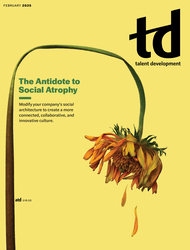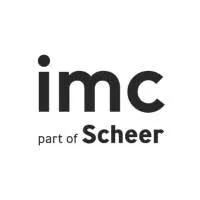TD Magazine Article
Learning Management Systems, February 2025
One of the key technologies in an organization’s learning ecosystem is a learning management system.
Published Sat Feb 01 2025
One of the key technologies in an organization's learning ecosystem is a learning management system. LMSs enable talent development professionals to track learning completions, collect training feedback, record data, and create development plans, among other functions. The vendors in this section offer considerations for TD functions.
Scaling enterprise training isn't just a challenge—it's a high-stakes balancing act. And traditional learning management systems often don't manage to solve these complex scenarios. They are too basic. Global, diverse workforces demand end-to-end ecosystems that don't just check boxes but redefine how successful learning gets done and drives impact.
Start with the basics: skills gap analysis. More than half of organizations say it's mission critical. Why? Guessing at workforce needs is a fast track to irrelevance. Smart tools identify gaps, then deliver training programs that hit organizational goals—no fluff, no wasted time.
Quality content is king, but only if it's easy to create and fills identified skills gaps.
Nearly 41 percent of companies crave tools that streamline content development. Think built-in authoring, seamless workflows, and third-party integrations to make scaling painless.
And of course: personalization. AI-driven learning pathways keep employees engaged and effective. Cookie-cutter courses are out; dynamic, tailored experiences are in. Individualized learning is the key. With decentralized teams across time zones, languages, and cultures, you need to ensure global consistency while accommodating local training needs.
A comprehensive learning ecosystem trains and transforms. By eliminating redundancy, ensuring compliance, and driving workforce agility, enterprises can outpace change and stay ahead of the competition.
Your workforce is the engine that powers business success—but what feeds the engine? The sum of your workforce's skills represents the capacity of your engine to achieve that success. By cultivating the capacity of your workforce engine through skills development, you shift potential energy into kinetic action that drives sustained competitive advantage.
All workforces rely on two skill sets to operate: soft and hard. But, if your goal is to establish and maintain a competitive edge, consider the degree of variability in your workforce's hard skills set. Variability creeps in through the proliferation of fragmented, tribal knowledge-sharing practices that affect operational efficiency, output, quality, risk, and—ultimately—cost.
That variability is what holds you back.
Structuring on-the-job training to support consistent hard skills development is the only way to sustainably maximize workforce engine output. Systemized OJT delivery and certification reduces skills variability and guarantees quality outcomes. Measuring your workforce's existing certified capacity against requirements for location, work area, shift, tasks, and tools ensures positive control of work at scale.
Structured OJT dramatically reduces the risk and cost of skills development. It's a force multiplier for organizational transformation and is a mission-critical component of Fortune 500 companies' competitive advantage.
2025 is shaping up to be the year of the frontline worker. Delivering impactful training experiences to frontline employees requires a thoughtful approach that combines engagement, relevance, and practical application. Understanding the specific needs of frontline employees is vital. Those workers face unique challenges and require training that speaks directly to their roles. Tailoring content to address real-world scenarios they encounter daily keeps training relatable.
Interactive, hands-on learning is key. Incorporate simulations, role-playing, and scenario-based activities to reflect common workplace situations to encourage active participation and help employees retain information by putting it into practice. Technology, such as mobile learning, enhances the experience. With the right learning management system, employees can access training materials at their own pace and schedule, especially in environments with limited training time.
Additionally, regular feedback and follow-up are important to reinforce learning. Periodic check-ins and quizzes help employees absorb the information and apply it effectively, whether they're operating equipment, serving food, or delivering exceptional customer service. Gamification and social tools can celebrate accomplishments and lift morale in a fun way.
Ultimately, the goal is to create a dynamic learning environment that not only equips frontline employees with necessary skills but also inspires confidence and a sense of empowerment.




